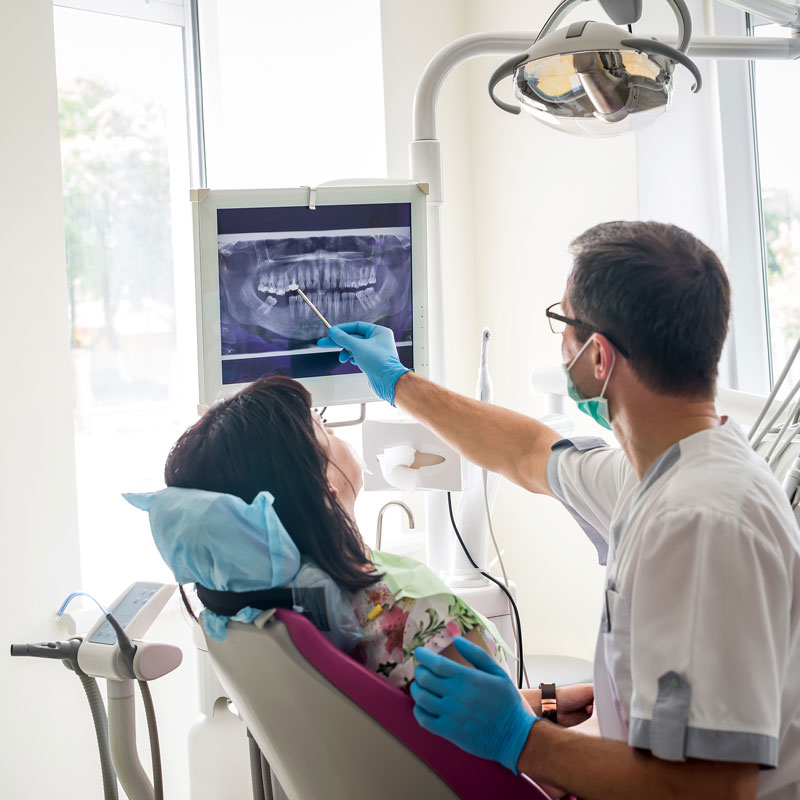Wisdom Teeth
What Is an Impacted Tooth?
Every tooth originates within the upper or lower jaw bones and naturally moves upward or downward to assume its designated position in the dental arch. While this is a typical process, complications arise when a tooth deviates from its intended path, encounters obstruction from another tooth, or faces impediment due to the dense bone structure of the jaw. In such cases, the tooth is considered impacted. Bluebonnet Oral Surgery and Implants removed impacted wisdom teeth at our office in San Antonio, TX.

How Serious Is an Impacted Tooth?
It’s unusual for a wisdom tooth, or third molar, to stay below the surface past around age 21, often causing complications. Even if not externally visible, an impacted tooth can develop decay from saliva-borne bacteria, resulting in severe pain. Pericoronitis, an infection around the crown, left untreated, may spread, causing systemic illness. The pressure from the impacted tooth can damage roots, displace other teeth, and affect chewing. Cyst formation around impacted teeth is a concern, leading to bone tissue destruction and damage to neighboring teeth.
What if the Tooth Hasn’t Caused Any Trouble?
The primary challenge lies in the unpredictability of when an impacted wisdom tooth will cause issues. It’s likely that complications will arise unexpectedly and at inconvenient times. If problems emerge later in life, the tolerance for the procedure may be lower compared to having it done at an earlier age. Additionally, in some cases, the wisdom tooth can only be removed after addressing infections or other complications. Pain may manifest as the final symptom of a progressively worsening problem, making it harder to treat and more likely to involve neighboring structures and teeth if you wait until it becomes painful. Complications are more frequent, and recoveries are generally longer. It is advisable to remove impacted wisdom teeth before problems arise.
What Is the Procedure Like?
The extraction of an impacted wisdom tooth is a surgical procedure involving gum incision, tooth and possible bone removal. The actual extraction is done with local anesthetic, often in combination with sedation options like nitrous oxide, oral medications, or intravenous deep sedation. Dr. Randolph, Dr. Cockrell and Dr. Jackson employ specialized surgical instruments, proper lighting, sterile procedures, and gentle tissue and bone handling for optimal results. The duration varies from 20 to 60 minutes, depending on complexity and the number of teeth removed. Sutures are typically used, dissolving within 5-10 days. Post-surgery, swelling and discomfort may occur, managed with prescribed medications. Temporary symptoms like limited jaw opening, jaw muscle soreness, and bruising are possible.
What Complications May Arise?
While complications are rare, all surgeries entail risks. Healing depends on your body’s tissue generation and oral hygiene. For lower jaw impacted teeth, there’s a slight risk of temporary numbness in the lower lip or tongue due to possible nerve bruising, typically lasting a few weeks. Upper jaw impacted teeth surgeries take precautions to prevent sinus wall injury. Rarely, a minor crack may occur, healing within days without complications. Follow post-operative care instructions diligently to prevent complications and ensure a smooth recovery.
